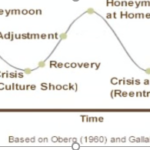| Selected Answer:
In a certain group, there is a set of behavioral norms that is adopted by the group as a whole. Each organization might have multiple groups. Each of the group might have norms that define what is acceptable and what is not acceptable in that group. In other word, the group norms define the limits of the group expectations from its members.
In an organization. Groups and teams are formed to perform different tasks effectively. These groups are the fundamental ingredients of the decision making process of the organization. Therefore, the group norms can come into play when making organizational decisions. As there are different groups involved in decision making, it is possible that group norms of a certain group may be in conflict with the group norms of another group and hence conflicts can arise.
If the norms of a particular group are in conflict with the organizational culture or objective, there is a possibility that the organizational goals will not be achieved or there would be problems in achieving these goals effectively. |




